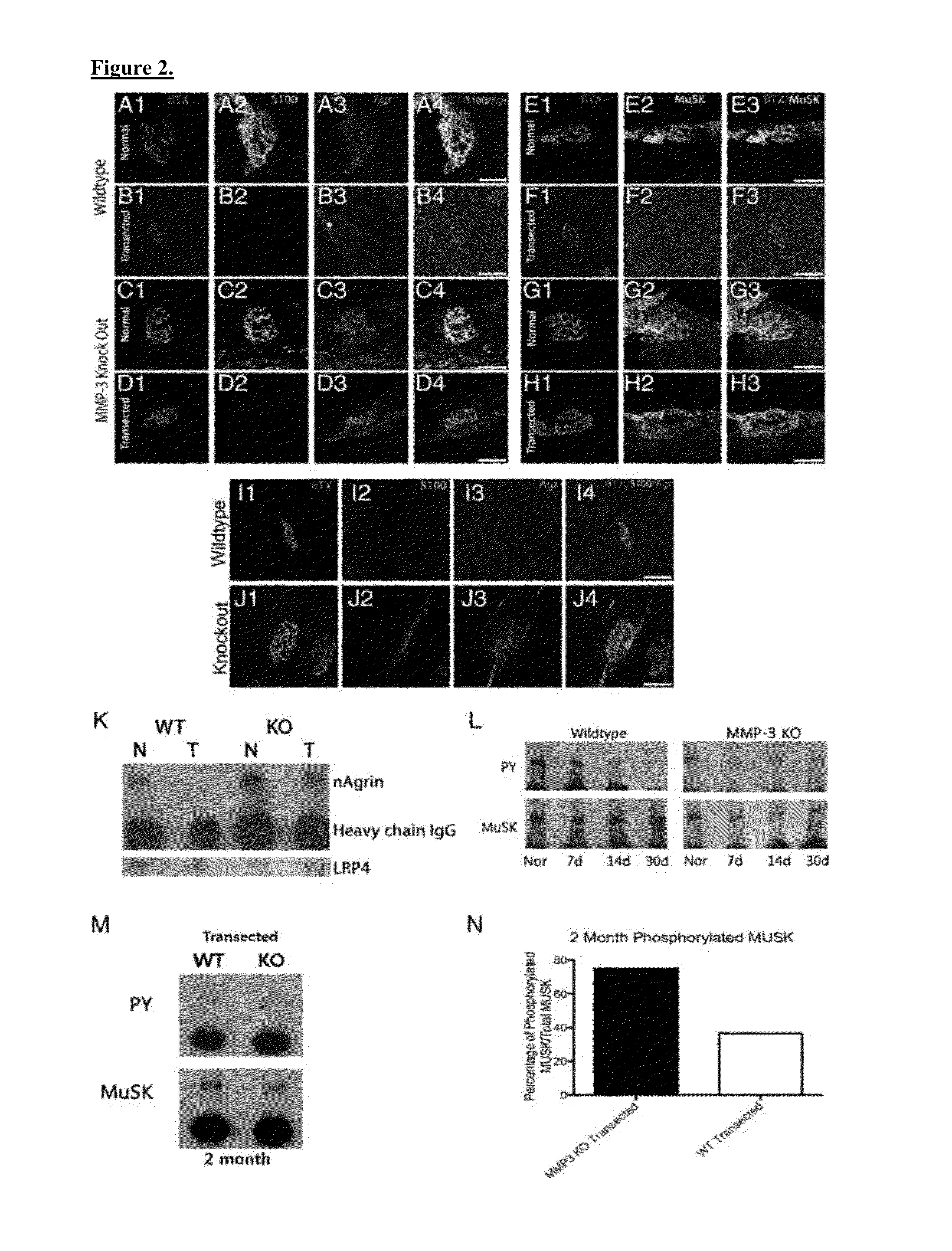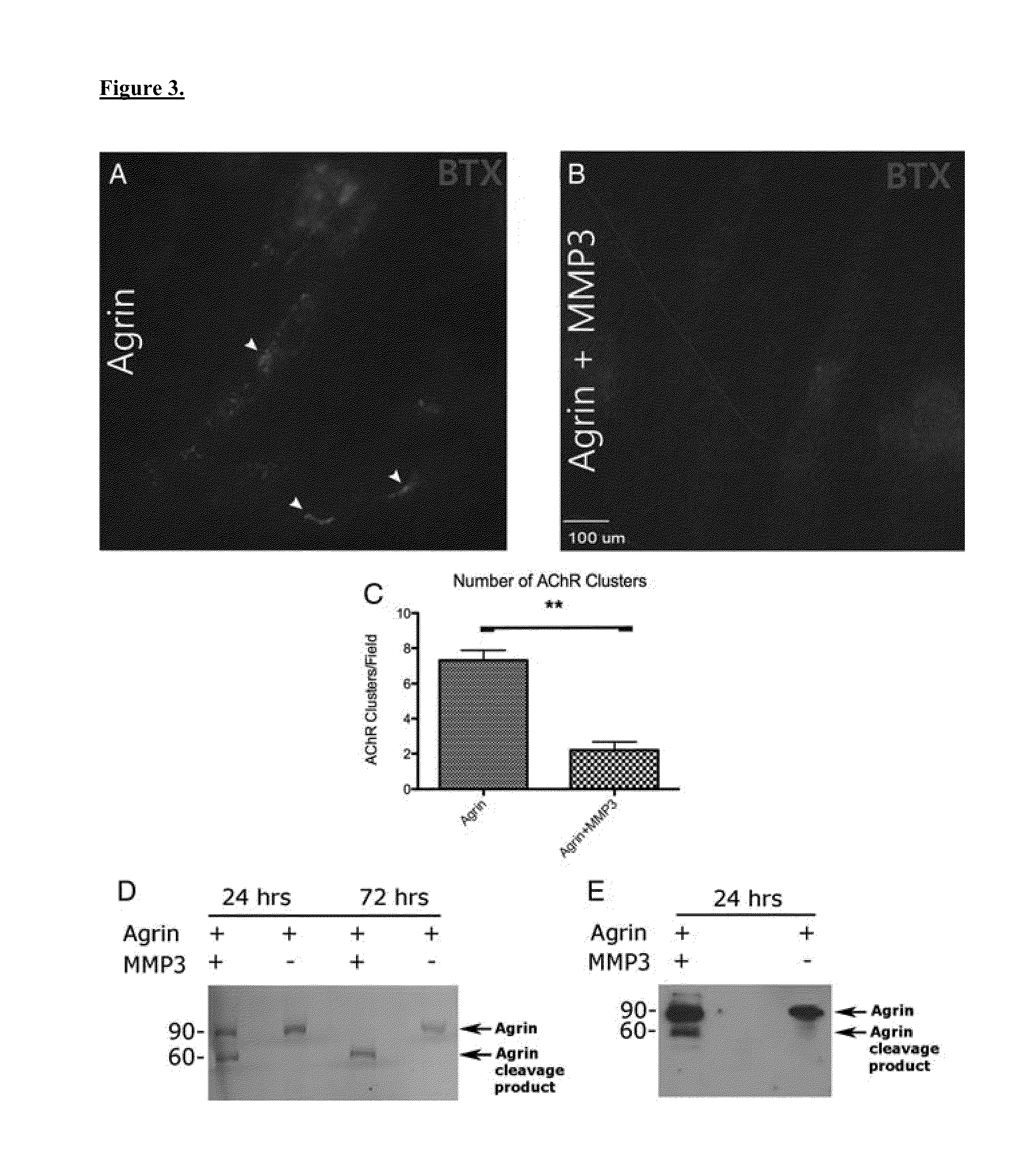Preservation of the neuromuscular junction (NMJ) after traumatic nerve injury
- Summary
- Abstract
- Description
- Claims
- Application Information
AI Technical Summary
Benefits of technology
Problems solved by technology
Method used
Image
Examples
example 1
Overall
[0058]Traumatic peripheral nerve injuries often produce permanent functional deficits despite optimal surgical and medical management. One explanation for the impaired target organ reinnervation is degradation of motor endplates during prolonged denervation. As described herein, the inventor investigated the effect of preserving agrin on the stability of denervated endplates. The inventor examined the changes in endplate structure following traumatic nerve injury in MMP3 knockout mice. After creation of a critical size nerve defect to preclude reinnervation, the inventor characterized the receptor area, receptor density, and endplate morphology in denervated plantaris muscles in wild-type and MMP3 null mice. The level of agrin and muscle-specific kinase (MuSK) was assessed at denervated endplates. In addition, denervated muscles were subjected to ex vivo stimulation with acetylcholine. Finally, reinnervation potential was compared after long-term denervation. The results were...
example 2
In Vitro Assessment of AChR Clustering
[0059]C212 cells were purchased from ATCC (Manassas, Va.). Cells were expanded and differentiated into myotubes as previously described. Five days following differentiation, myotubes were then treated overnight with 0.11 g His-labeled rat recombinant agrin (R&D Systems, Minneapolis, Minn.) or 0.11 g rat recombinant agrin incubated with 2.51 g MMP3 active subunit (Millipore, Billerica, Mass.) for 72 hours. Western blot was performed to confirm cleavage of agrin. After treatment of myotubes with Alexa 555-conjugated a-bungarotoxin (a-BTX; Invitrogen, Carlsbad, Calif.; 1:1,000), samples were fixed according to standard procedures for immunohistochemistry. Ten random fields at 40 magnification were evaluated by a blinded observer for AChR clustering under fluorescent microscopy as previously described. An AChR cluster was defined as an aggregate of at least 4 lm2. Three samples from each treatment group were analyzed.
example 3
[0060]All procedures involving living animals were approved by the institutional animal care and use committee of the University of California at Irvine. Homozygous pairs of the 129 Sv / Ev and MMP3 knockout mice were a gift from Dr W. Yong at the University of Calgary. Generation of the MMP3 knockout mice has been detailed previously. Genotyping was performed by Transnetyx (Cordova, Tenn.). Body weight and sciatic function index (SFI) were performed to identify any gross phenotypic or AQ1 motor differences.
PUM
| Property | Measurement | Unit |
|---|---|---|
| Degradation properties | aaaaa | aaaaa |
Abstract
Description
Claims
Application Information
 Login to View More
Login to View More - Generate Ideas
- Intellectual Property
- Life Sciences
- Materials
- Tech Scout
- Unparalleled Data Quality
- Higher Quality Content
- 60% Fewer Hallucinations
Browse by: Latest US Patents, China's latest patents, Technical Efficacy Thesaurus, Application Domain, Technology Topic, Popular Technical Reports.
© 2025 PatSnap. All rights reserved.Legal|Privacy policy|Modern Slavery Act Transparency Statement|Sitemap|About US| Contact US: help@patsnap.com



